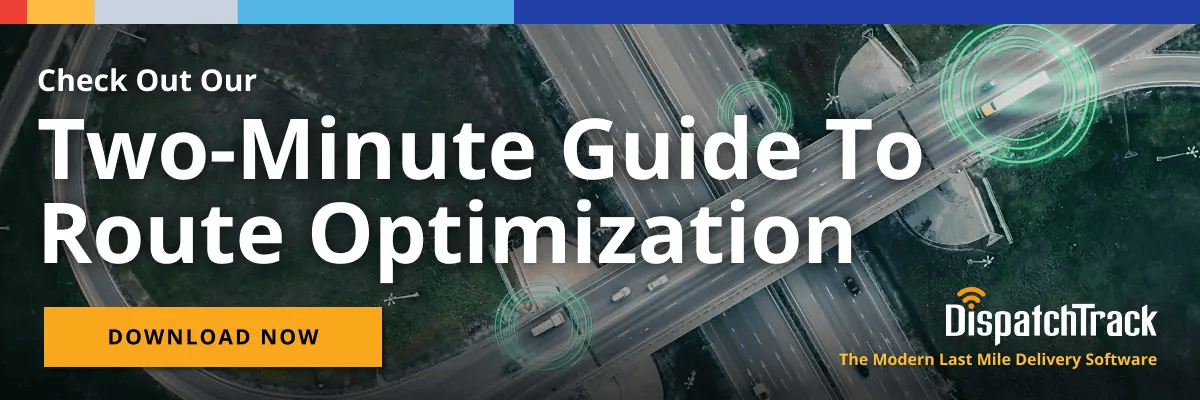Studies have shown that businesses that fail to optimize final mile delivery can experience a real drop in profits over time. This is alarming, but hardly surprising. After all, inefficient delivery routes and rising customer demands can quickly result in expensive and hard-to-manage last mile logistics.

While frequent orders are the lifeblood of any business, they also eat into your margins if you cannot address the last mile logistics challenges that come with meeting ever-greater customer demand. Luckily, rising to the challenge of meeting high order volumes for delivery doesn’t have to break the bank. By using the right strategies and the best last mile delivery software, you can achieve reduced supply chain costs and become more competitive by optimizing last mile delivery services.
Why Overcoming Last Mile Logistics Challenges Is So Crucial
Last mile delivery is the process of delivering goods to end customers as quickly, efficiently, and cheaply as possible from a distribution center. Over the last few years, U.S. e-commerce has grown steadily, from approximately $286 million in revenue in 2017 to more than $430 million in 2020. Even as the economy becomes more volatile, the effects of this growth aren’t going anywhere any time soon.
Retailers, distributors, and other businesses should be pleased with these trends. After all, who doesn’t want more sales? Unfortunately, things can get messy once you start dealing with continuous high delivery volumes. The last mile of a supply chain is generally the most expensive, and an increasing number of orders puts more pressure on companies to meet customer demands for fast deliveries without compromising profitability. Especially in volatile or unpredictable markets, meeting last mile logistics challenges head on is crucial for ensuring happy customers and manageable costs.
What Makes Last Mile Logistics So Expensive?
Inefficient travel routes, high expectations of customers relating to shipping times and rates, and the potential missed and failed delivery attempts all pose obstacles to achieving cost-effective and efficient final mile delivery.
Customer expectations are at an all-time high, home addresses certainly don't seem to be getting closer to one another, and gas prices continue to rise. Combine all of these factors, and you end up dealing with costly final mile delivery operations.
Here are some of the other factors that drive last mile delivery costs up:
Inefficiency in Route Planning
Creating routes for a large number of stops tends to become incredibly inefficient as soon as the slightest complexities emerge. Whether traveling through crowded cities or reaching the depths of rural areas, things are rarely as simple as traversing the straight line from point A to point B.
Even when your routes are efficient, the last mile simply requires a ton of driving a huge amount of costly fuel consumption. And when they’re not efficient, you wind up driving even more miles than you have to, delivering fewer orders per day, and opening yourself up to potential logistics disruptions.
Accelerating Customer Expectations
It's clear that customers want their orders delivered as quickly as possible—but faster delivery turnarounds (e.g. same-day deliveries) can often be much more costly than deliveries with more relaxed lead times (though, of course, buyers still tend to want these deliveries at low or no cost to themselves). At the same time, total visibility into deliveries is non-negotiable.
You may be tempted not to prioritize speed when it comes to deliveries. But keep in mind that there is a risk of losing clients and hurting your brand's reputation if you neglect to meet these needs. This is a tough balancing act: A significant percentage of shoppers will abandon their cart if the brand or platform doesn't offer same-day delivery, but consumers are also typically wary of ordering a second time from a brand that offered them a poor delivery experience. Simply put, you need to find a way to only make delivery promises that you can keep.
Failed and Missed Deliveries
Deliveries can fail if the driver goes to the incorrect address, is running late, or the customer isn't at home for the delivery. A failed delivery results in higher fuel and labor and faster wear and tear on the delivery truck, as the driver must return to the same location a second time.
Failed deliveries can obviously negatively affect customer satisfaction, and it only takes a few negative customer experiences at most to lose a client. That’s why delivering at the right time is so crucial to dealing with the challenges that come with the last mile.

Why Route Optimization Software Is Key to Keeping Costs Down
Effectively optimizing delivery routes is one of the most powerful ways to manage delivery routes more efficiently and cost-effectively. By ensuring a minimum of miles driven per stop and providing accurate delivery ETAs, route optimization can cut down the number of failed deliveries, decrease fuel and labor costs, and ultimately reduce many of the inefficiencies that plague last mile logistics.
Smart, AI-powered route optimizing software can offer the following benefits:
- Management delivery constraints: When planning the best route to prevent failed deliveries, smart routing tools consider a range of variables, including vehicle capacity, customer availability, and driver schedule—without losing route efficiency.
- Easier handling of the unexpected: Advanced software with dynamic routing features can enable you to reroute and make adjustments when unforeseen circumstances happen.
- Smarter real-time tracking: Your customers want to be able track their packages in real-time, and routing technology can help add predictive ETAs to enhance the tracking experience. By providing real-time updates, you make sure customers are kept informed, which prevents them from flooding your customer service lines with concerns about their orders..
- Boosted driver productivity: When your routes are efficient and they come with ETAs that are realistic for your drivers, you can reduce miles driven, time spent on traffic, and failed deliveries, ultimately saving time and money.
In the end, the success heavily depends on your ability to meet your customers' delivery experience expectations. Fortunately, reducing costs, promoting customer loyalty, and gaining a competitive edge are all possible with the right final mile delivery software.